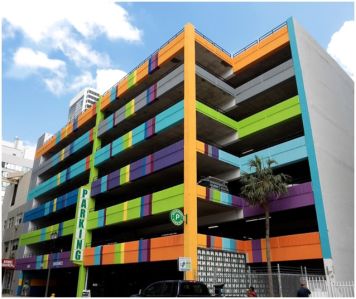CREFC Miami 2020: All Eyes on M&A Activity in the Large Loan Space
By Mack Burke January 16, 2020 4:08 pm
reprints
While single-asset, single-borrower (SASB) issuance came out of the gates at a sluggish pace in 2019, market observers correctly predicted that large asset managers would bring consistent life to the arena with a string of sizable acquisitions ripe for financing via this type of securitization.
Last year’s SASB movement was fueled by mergers and acquisitions activity — such as Brookfield’s 2018 purchase of Forest City Realty Trust, which saw deals sprinkle into 2019, and Blackstone’s buy of a controlling interest in Great Wolf Resorts in the fall of 2019 — something that market participants at this year’s Commercial Real Estate Finance Council (CREFC) convention expect to continue in 2020. But some see consolidation and thinning of the field as a potentially worrisome trend.
Brookfield’s utilized a SASB execution for its refinance of a portfolio of seven mixed-use and office assets it picked up in its nearly $7 billion purchase of Forest City Realty Trust . Funded by a $402.8 million, two-year, floating-rate loan — from Barclays, Citi, Bank of America and Deutsche Bank — the debt was securitized in the CORE 2019-CORE SASB deal.
Last year, 89 SASB transactions were issued in the U.S., according to data from Trepp, and 14 were issued internationally, making up around 47 percent of overall CMBS issuance in 2019. In the fourth quarter, SASB activity jolted to just over $23 billion across 35 deals, trumping the 14 deals and just under $6 billion that was issued in the previous quarter and outpacing other CMBS sectors, according to Trepp.
One attendee at the CREFC conference, who works in the real estate finance group of a major global asset manager, said that the market is still “ripe for M&A. Rates are low and we have a lot of capital.” From his perspective, “we’ve targeted sectors we like; the market feels healthy and is going to be a big year in 2020.”
Big sponsors easily pull levers and push buttons that influence lender activity, and in today’s liquid market, this spurs competition between CMBS and balance sheet in the large loan space. One lender at a major global investment firm said that so much is driven by the high-profile, influential sponsors today that the nature of the market has become “more collaborative. Five years ago, you wouldn’t finance your competitors. It’s less of a zero-sum game and it’s more about ‘what do I want?’ and ‘what can I win?’ ”
Many CREFC attendees agreed that in today’s CMBS market, sponsorship is key. But several positive themes are prevalent in the industry today: market fundamentals are sound; leverage is much lower than previous cycles, signaling a heightened sense of discipline; and loss severities have come down in large SASB deals.
Structure was a talking point as the key indicator of the level of discipline in the market. And in large deals, one CREFC attendee, who is in a senior role at a well-known ratings agency, said that the biggest challenge is “seeing the potential impact of structure and making provisions for it, like lease provisions, recourse carve outs and reserves. Where the triggers are placed really matter a lot. In terms of structure, it’s death by 1,000 cuts. When things get stressed that’s when these provisions come around.”
“We spend a lot of time struggling with deals around: what is the proper balance in serving your clients?” one senior originator at a major CMBS and balance sheet lender opined. “We try to figure out how to accommodate a structural feature. We basically go through the different layers of a deal and ratings people in our group take a disciplined approach in establishing a capital structure. Structures aren’t the same as the first SASBs in 2012, but there is a cognizant and deliberate attempt to meet the structural requirements of the marketplace.”
For major life insurance companies in search of yield in the large loan space, “accounts that can withstand the liquidity of a whole loan is preferable for us,” said one senior CMBS research professional at a major life company. “Accounts have liquidity needs too, so we started going to the SASB space for liquidity’s sake.”
But life companies playing in the smaller SASB arena, with deals ranging from $300 million to $500 million, it can be challenging, poses a riskier bet and can be a balancing act as they search for yield while trying to do right by their accounts.
“With the smaller SASBs, you’re not going to necessarily have a top-tier sponsor or top-tier market to withstand volatility, so that binary risk becomes more magnified,” one attendee noted. “On the floating side, CRE CLOs have nuances because they’re newer and there’s less liquidity, but most of our dollars are invested in SASB.”
Going forward, market participants agreed that sponsorship will reign superior above asset type in large deals as those transactions continue to be concentrated among a handful of behemoth borrowers. As many expect M&A activity to continue to drive deal flow in the large loan space, the lending professional at the major global investment firm said “sponsor limits [are something] we need to think about … four or five groups have aggregated all the capital, and the big are getting bigger. Property types will cycle through, but sponsor limits are a concern for us.”


